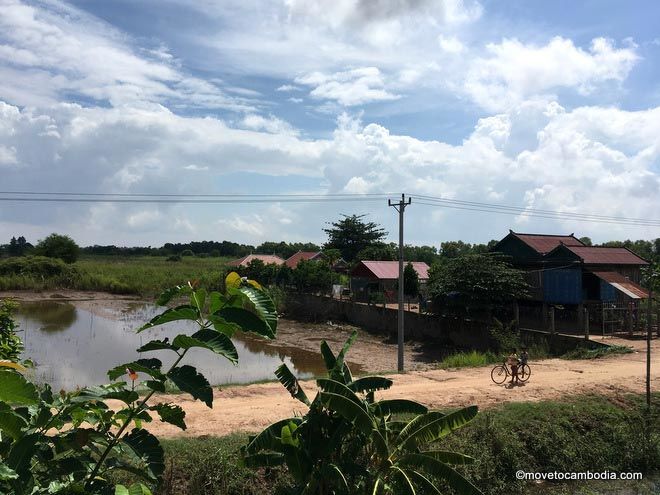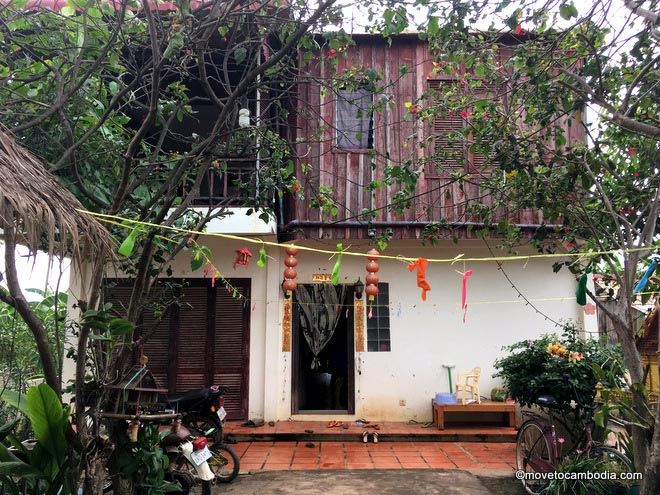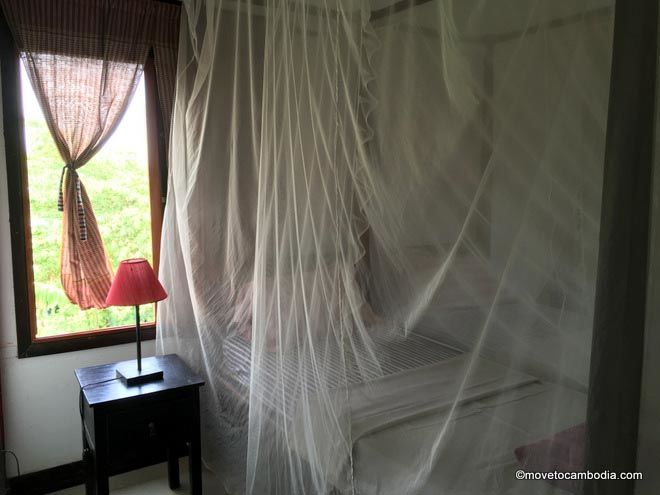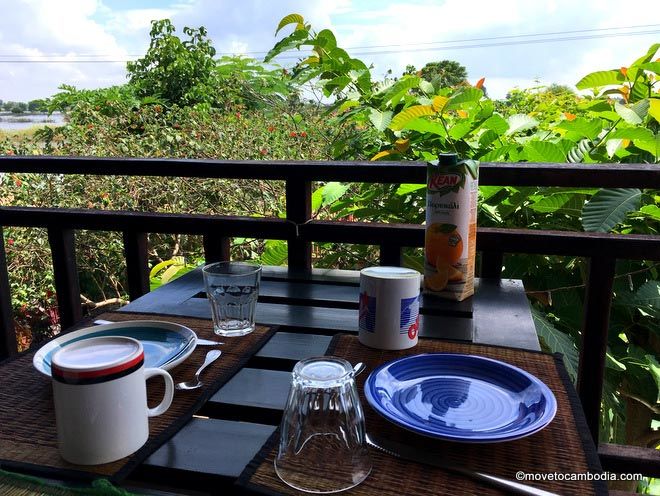One of the paradoxes of travel is that we often express a desire to experience how life in our destination is truly lived, but we would probably hate it if we did. In Cambodia, although there are transcendent moments to be had exploring the countryside and chatting with villagers amid rice paddies and sugar palms, the fact is that living in a rural village basically sucks. You’re usually sleeping on cheap, hot polyester bedding, sweating your eyes out, and peeing all over your feet because you’re too clumsy to properly use a squat toilet. In the rainy season, everything is covered in dirt, water, and every imaginable combination thereof, and it can be tricky to determine which of the brown streaks covering your shoes are mud and which are cow excrement.

A taste of rural Cambodian life.
As journalists, after a long day of conducting interviews that usually converge around the theme of how terrible people’s lives are in the Cambodian countryside, we’re always pretty grateful to escape back to our inexpensive, air-conditioned room in a provincial town and take a hot shower. But we’re sympathetic to the (usually genuine and well-meaning) desire to get to know the “real Cambodia.”
Enter Koh Dach, or Silk Island, a surprisingly rural-feeling island just off the coast of Phnom Penh. It’s easy to get here by motorbike or tuk tuk up National Road 6a and onto a ferry, which costs 500 riel per person and delivers you across the Mekong River as safely and efficiently as is possible in Cambodia.
And enter the Red House, a cleverly-conceived homestay-cum-AirBnB that provides a very good sense of the pleasures and pitfalls of rural living in Cambodia, for a very reasonable price ($20/night).
The three-bedroom establishment is run by French expatriate Stéphan, his Cambodian wife, Sreypov, and their impish son, Sengov, as a family affair, with Stéphan tending to the guests, Sreypov doing the marketing and cooking, and Sengov providing entertainment and, occasionally, fetching visitors their morning coffee.

Red House Koh Dach
On our way here, on what we thought would be a breezy ride down a rice paddy-lined road, we got stuck in so many ruts that we ended up having to get off our bike and walk it much of the way, while grappling with ankle-deep mud-drifts. Several cows passed us. By the time we arrived at the Red House, a handsome two-story structure along the Mekong, we were filthy and streaked with what we hoped was just mud.
The ecstatically hospitable Stéphan welcomed us by literally kneeling down and washing our feet, splashing them with water from the large cistern that most Cambodians keep by their front door.
“Like Jesus!” he exclaimed of his ablutions.
The encounter set the tone for the rest of our stay, during which Stéphan catered to us with almost relentless devotion, and tempered the indignities of rural living to the extent he could. Spending time on the outskirts of the capital city can give visitors a much deeper understanding of the social and political problems facing Cambodians than a stay in Phnom Penh proper. The road is muddy and ripped up, Stéphan explained, because a well-connected businessman is developing nearby land and running heavy machinery. Water access is spotty because residents here do not have access to public utilities, but Stéphan has managed to keep the flow fairly constant with tanks and a well. We experienced brief water and power outages (apparently the man who refilled the tanks was on holiday—another spot-on slice of real Cambodian life), but neither marred our stay.

Red House Koh Dach
The beds were comfortable, the sheets cotton rather than polyester, and the toilet paper blessedly abundant (not always a given in this part of the world). Most thrillingly, the bathrooms had quick-drying cement floors and a dedicated shower area, neither of which are common in Cambodia, where showers, if they exist at all, tend to be placed as inconveniently close to the toilet as possible. Hot water is available, although air conditioning is not.
A tasty, simple home-cooked dinner cost $6 per person and ended with an immense selection of local fruit, including the freakishly delicious “longkan,” which tasted like a cross between a mangosteen and the more common longan. A simple breakfast spread of tea, coffee, bread and homemade jams cost $3.50, with more extensive options available upon request. Although there is a dining area behind the house, Stéphan kindly hauled our breakfast upstairs to the second-floor balcony, which has a beautiful view of marshy fields and cottages.

Breakfast with a view
There is pretty much nothing to do on Koh Dach, which is part of the charm. When we asked the voluble Stéphan for suggestions, he laughed and shrugged: “Go around, enjoy the living, open the heart!” Well, okay. We took that as an invitation to spend our entire stay loafing around the house and grounds, which are not huge but include a pleasant, hammock-stocked pavilion on the Mekong.
For the more touristically inclined, The Red House provides free bicycles and arranges fishing trips, and there are silk-weaving “villages” on the island that cater to visitors. But really, the best thing about the guesthouse is its highly mediated but reasonably authentic introduction to Cambodia—one that will appeal to those who like big skies and rice fields but not discomfort and malaria.
Rates start at $14 for a single, $20 for a double, and $30 for a triple and can be booked online.
The Red House
Chong Koh village, Koh Dach district
Koh Dach, Phnom Penh
T: 096 736 0256
→ Check prices and book a room at The Red House on Booking.com now.
We may (or may not) earn commission on sales made through some links on this page. We do not give phony reviews in return for freebies. Seriously. For more information about our policies, please see the disclosures section of our About Us page.
Leave a Reply